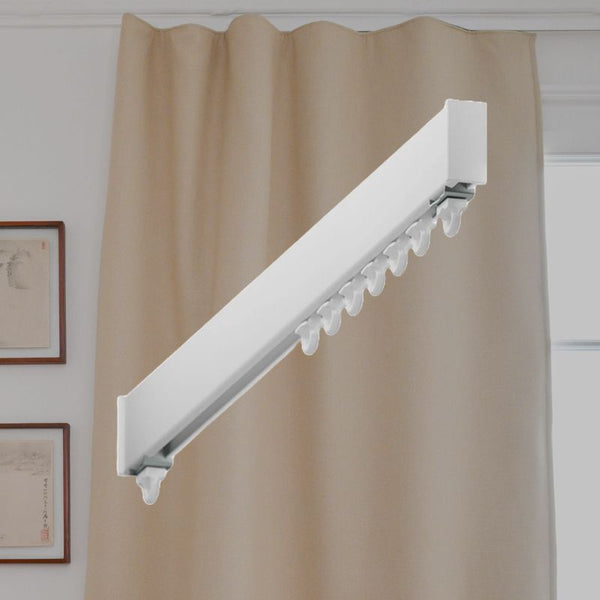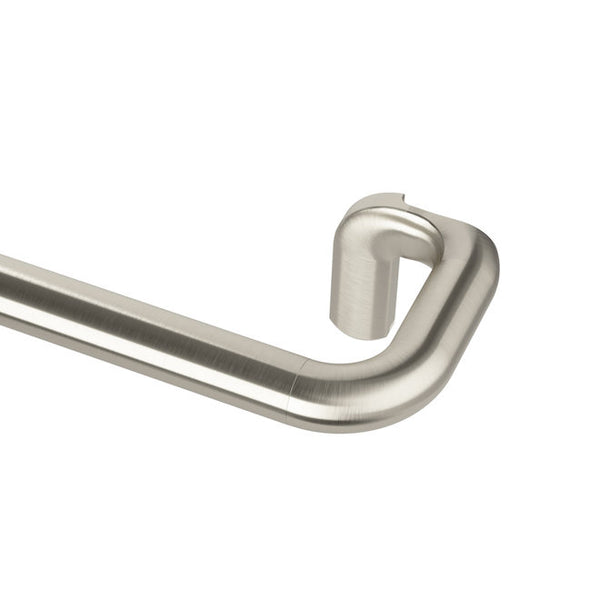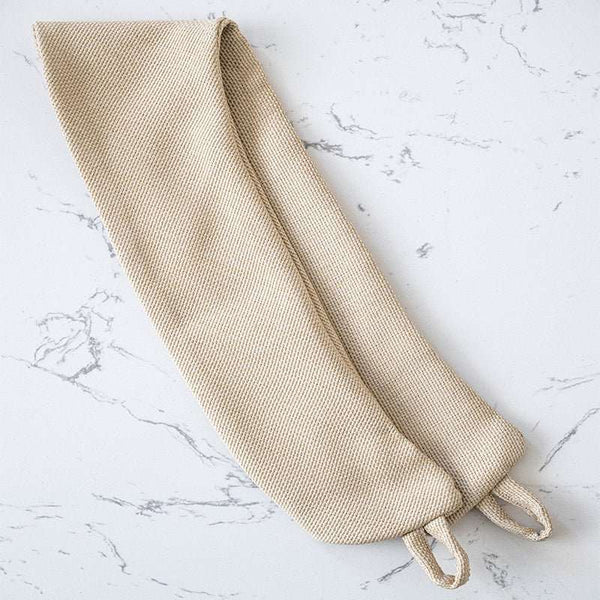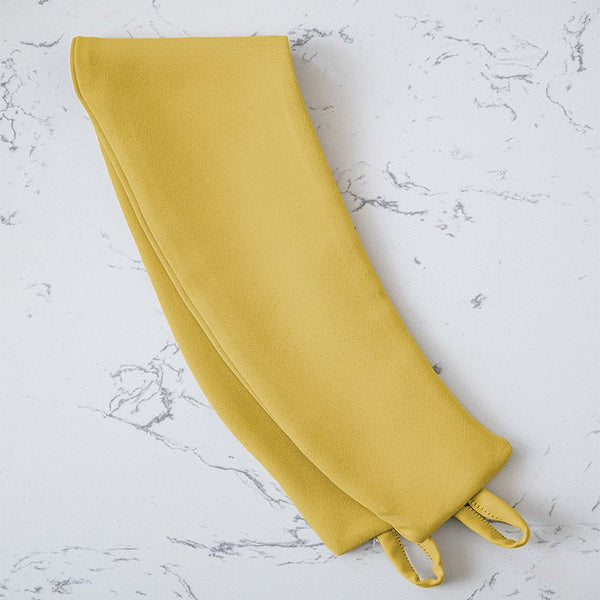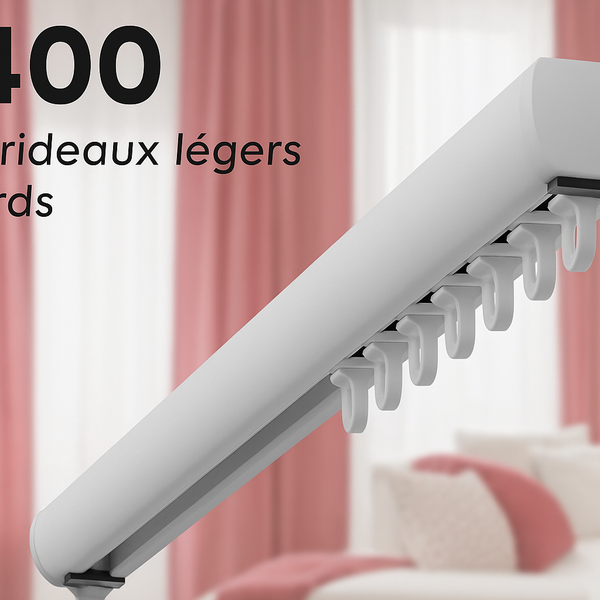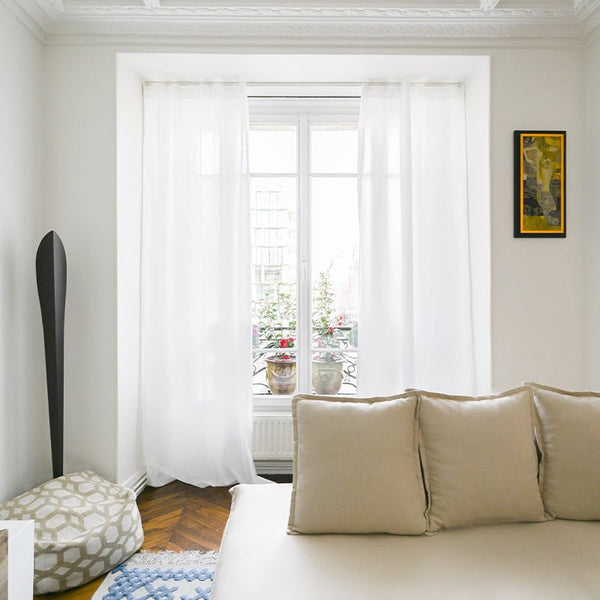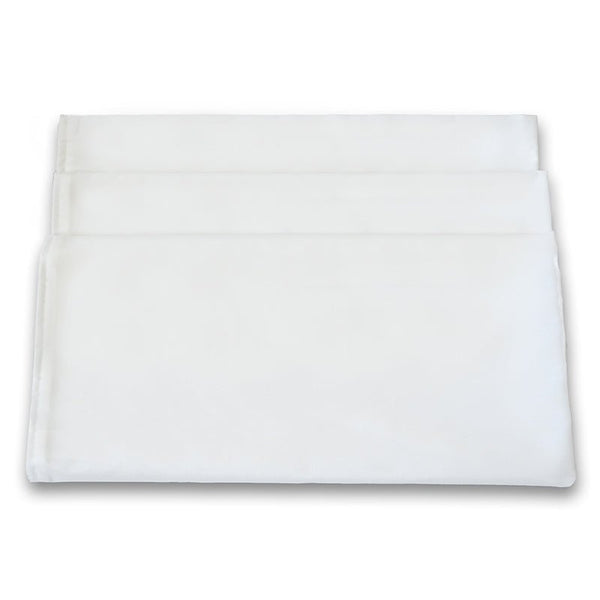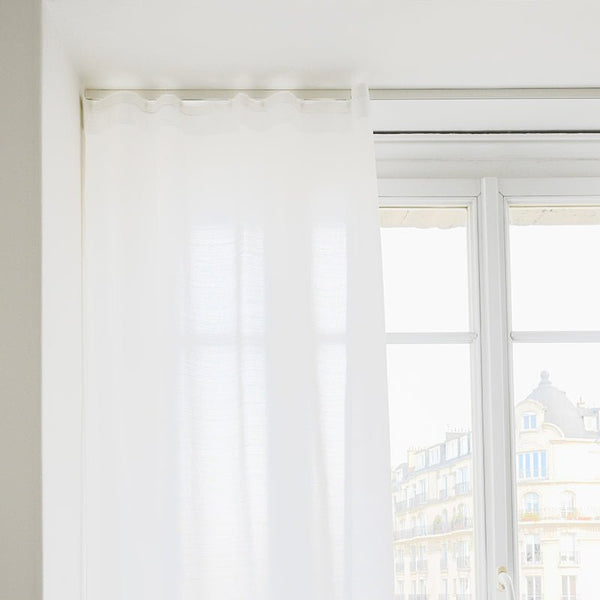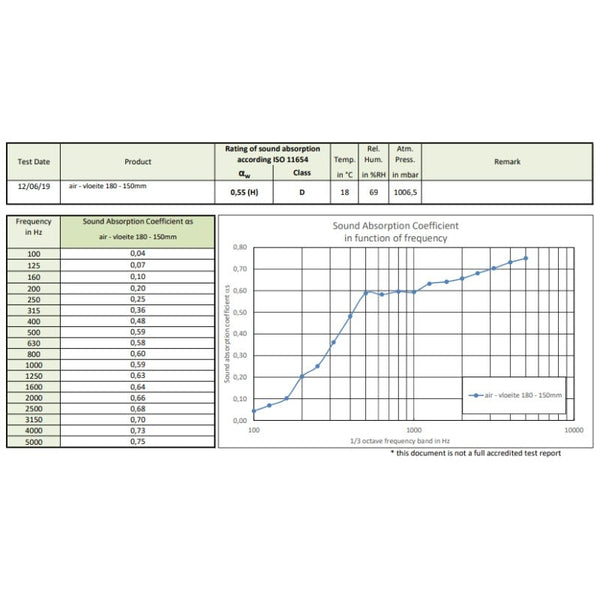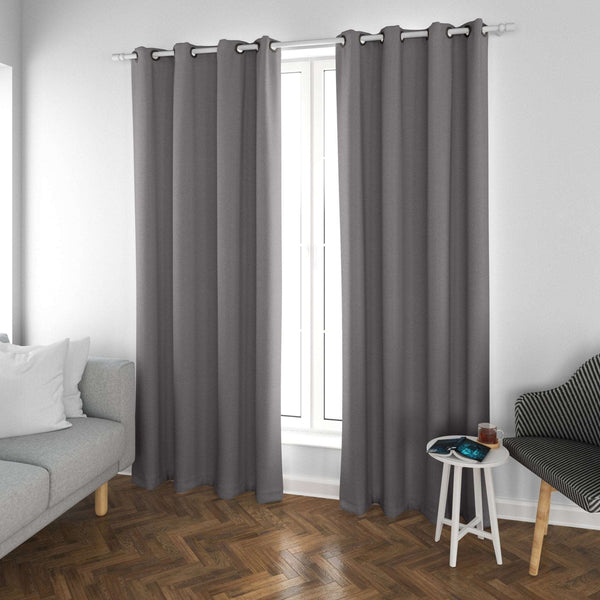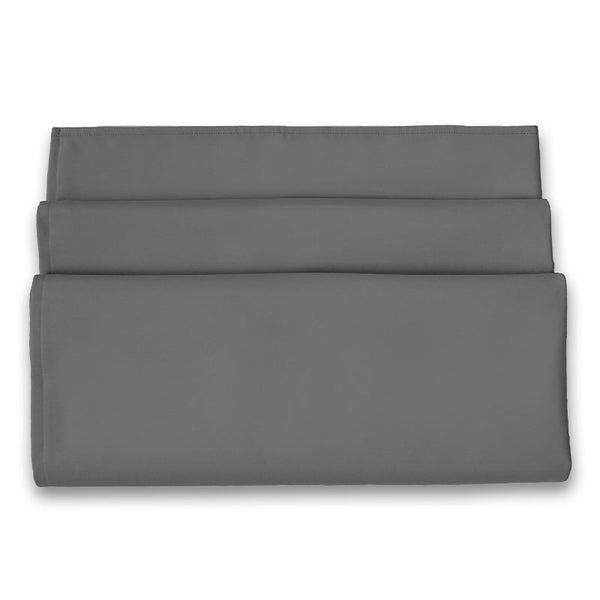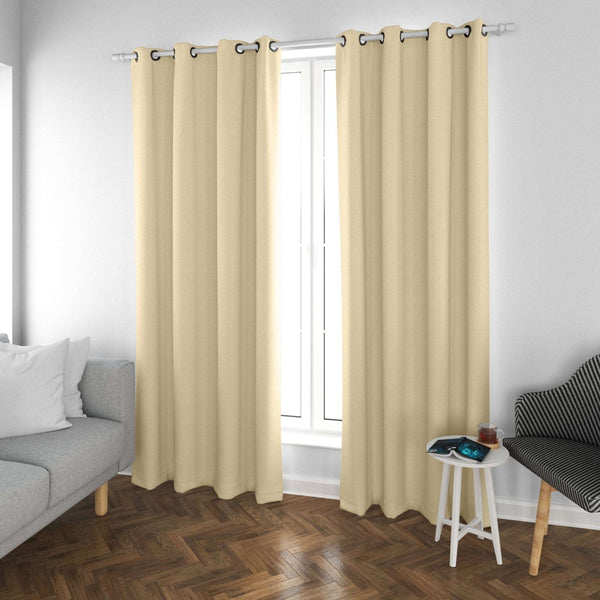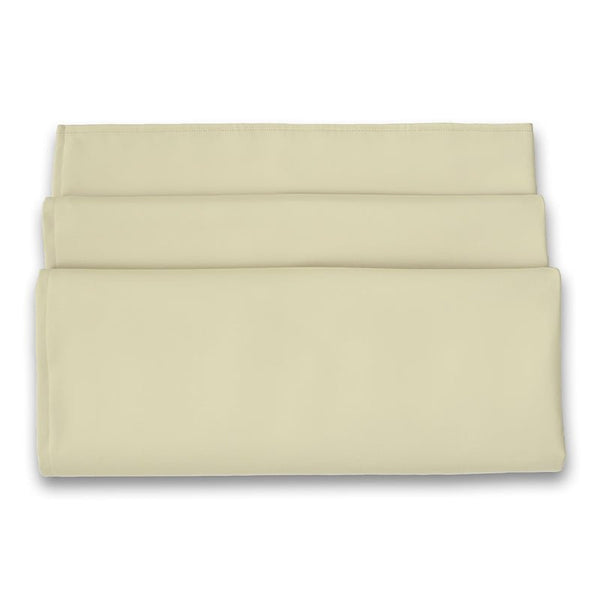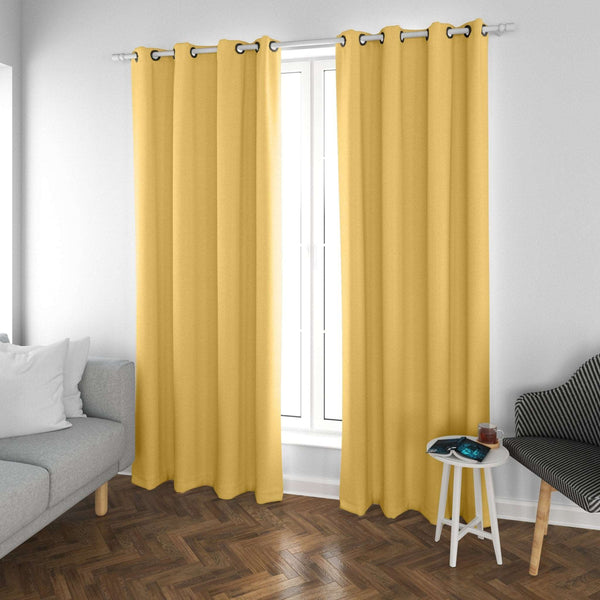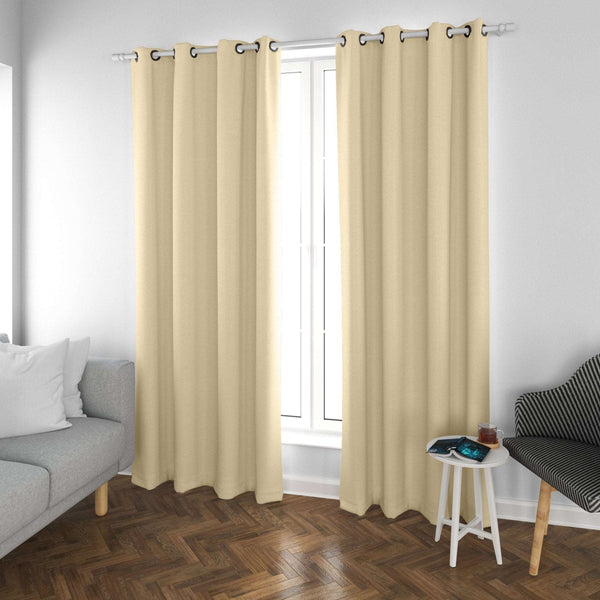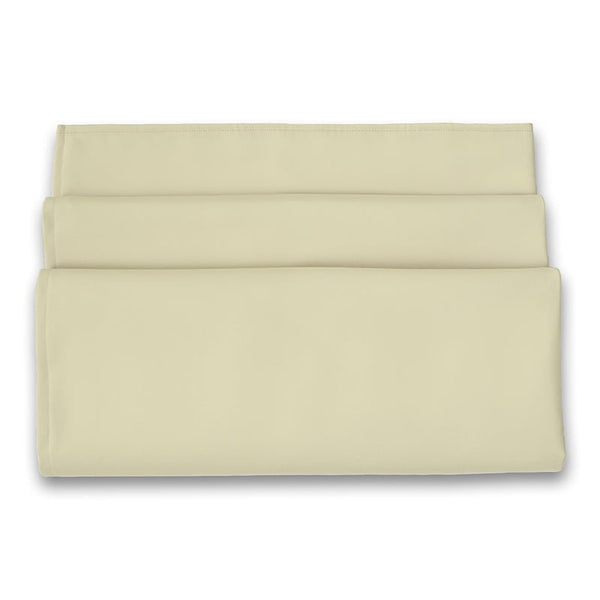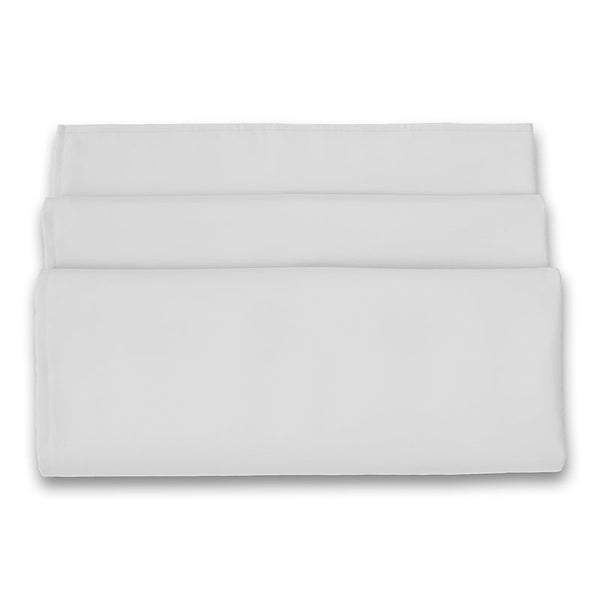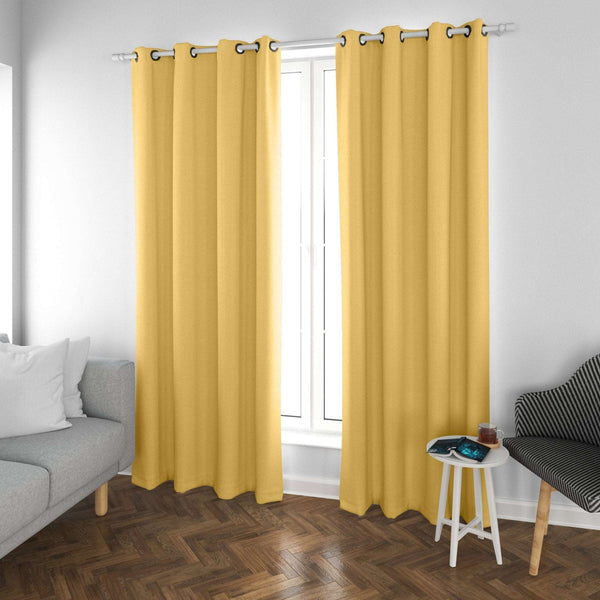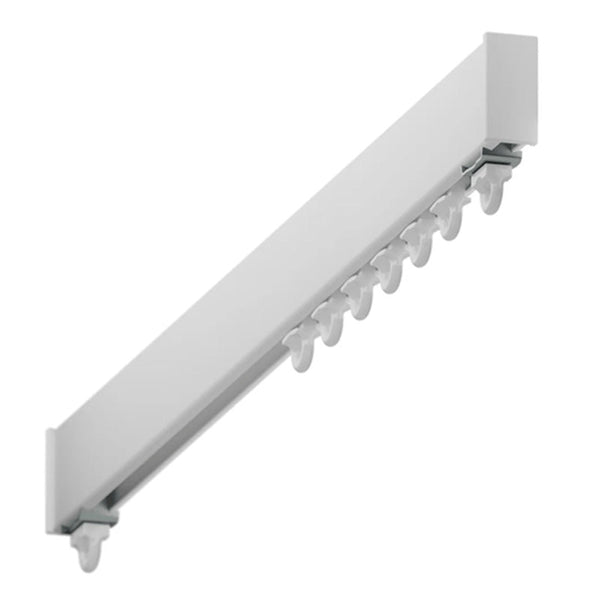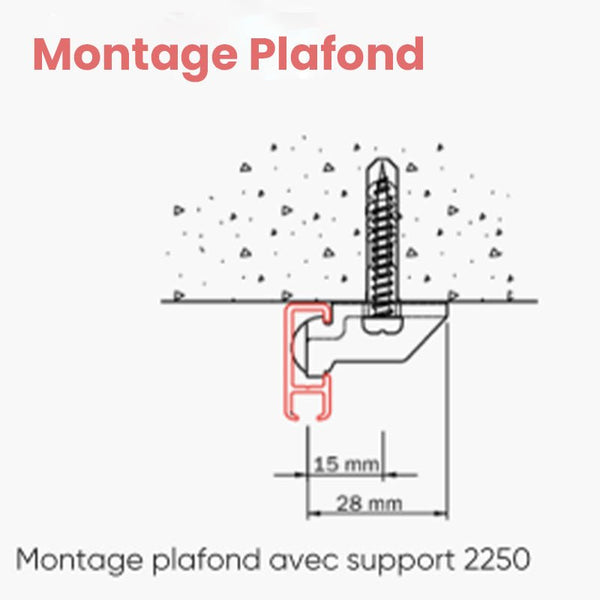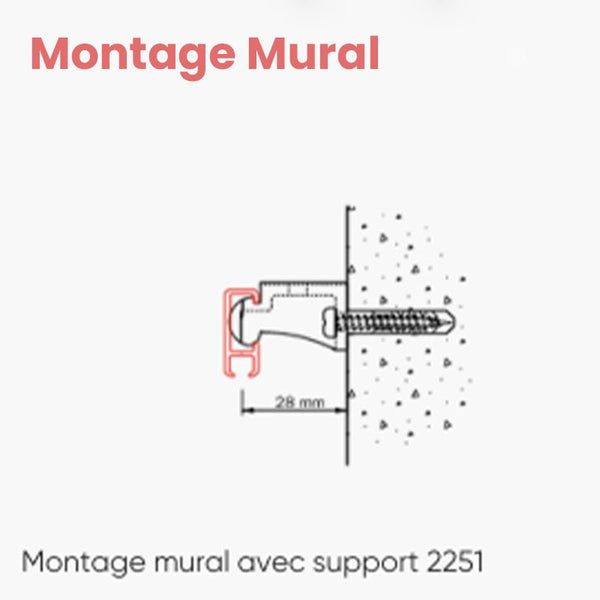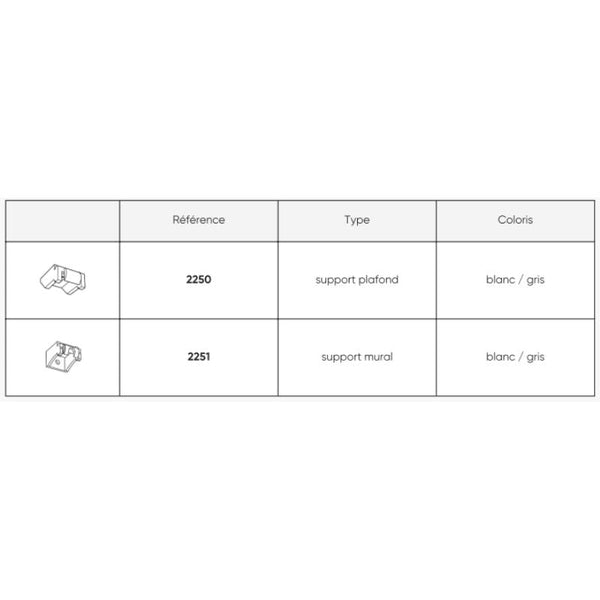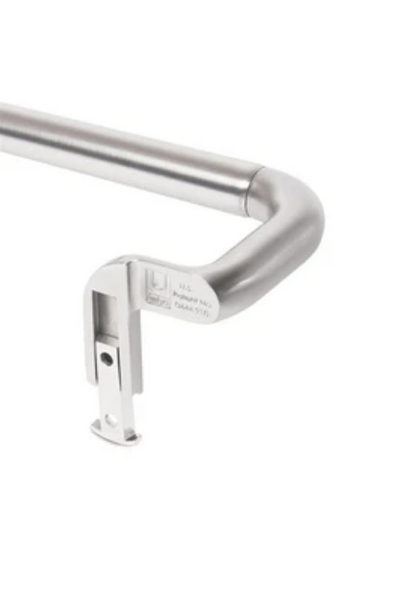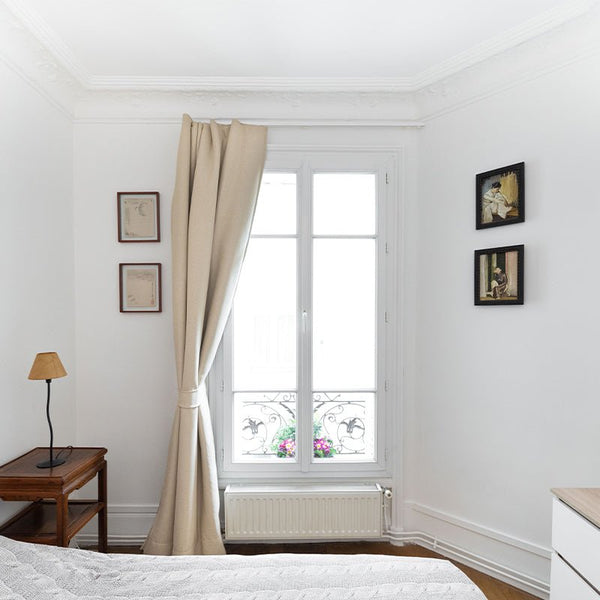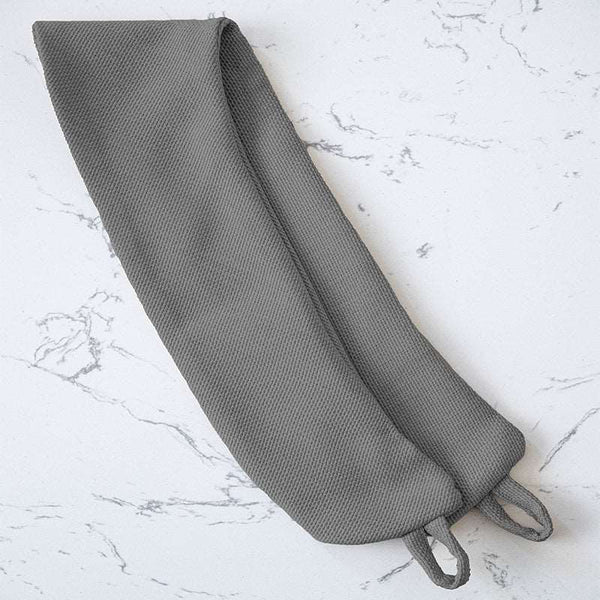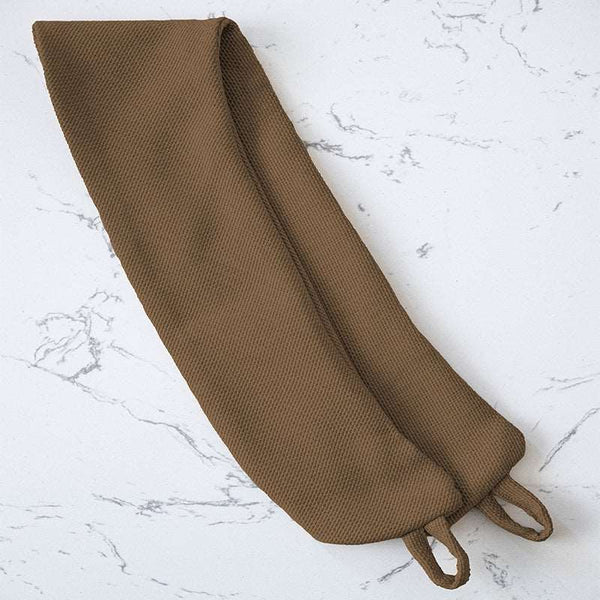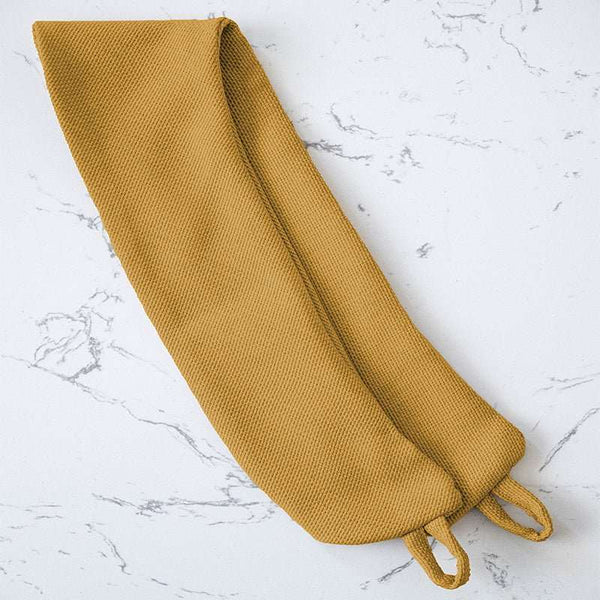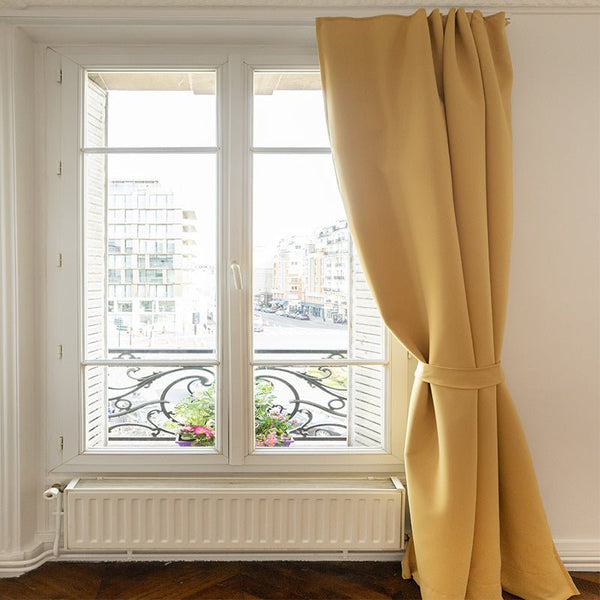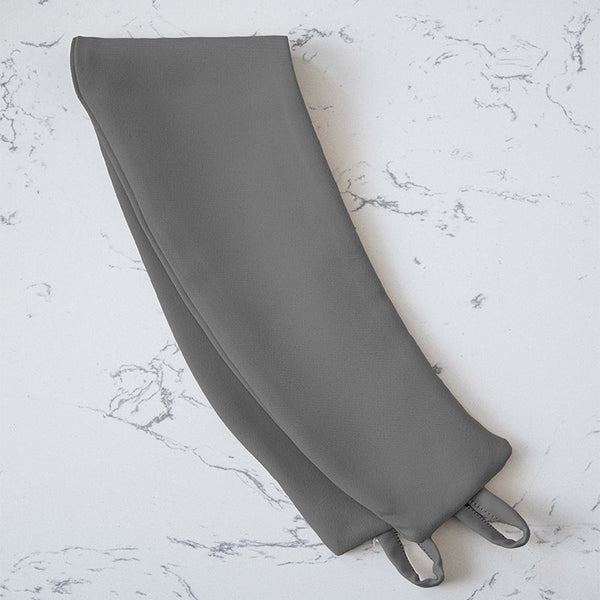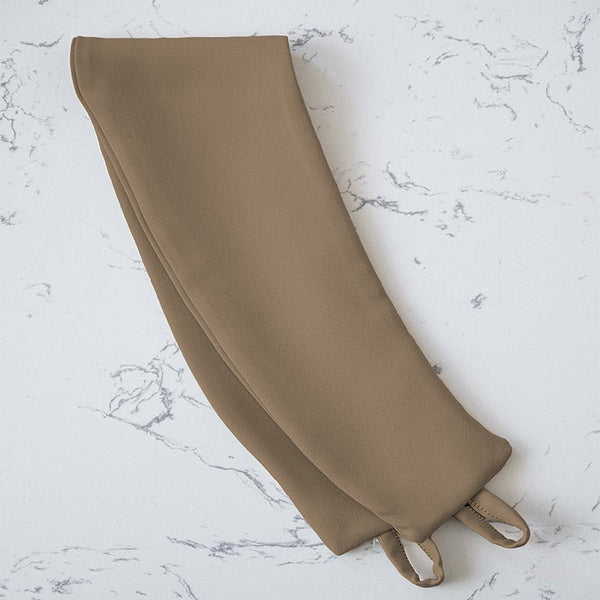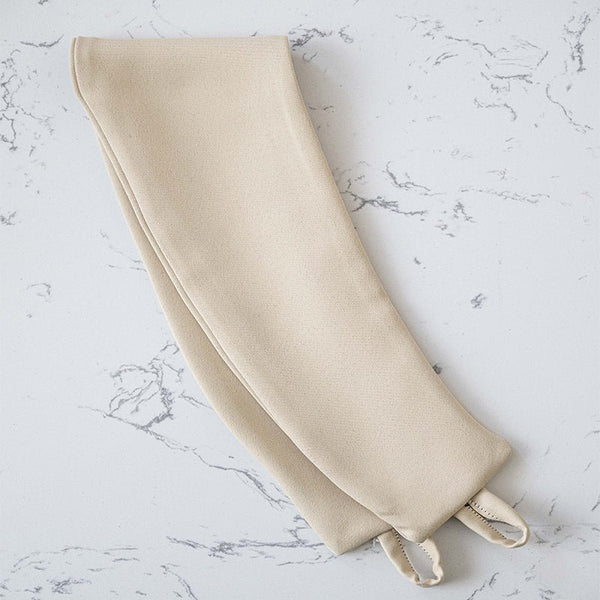Is noise part of your daily routine too? Whether it's a street that never sleeps, a neighbor who plays music or that old wooden floor upstairs that never stops creaking, who hasn't wanted to insulate their home against noise pollution? For us, acoustic comfort is not a secondary concern: restoring calm means restoring well-being at home. So, how can you share concrete solutions for gaining peace of mind, even if you're a tenant, or don't want to break the ceiling just yet? We've come up with some very interesting solutions, such as an acoustic curtain to reduce noise from outside.
Let's face it: the question of how to really reduce annoying noise is a common one. So let's take a look at the problem together, method by method, so that you don't have to put up with noise any longer, but can take action and rediscover a peaceful interior that's just like you. Ready to take stock with us?
What are the real causes of noise pollution in our homes?
Before you think about installing panels or double-glazing, have you identified what's really causing the noise in your apartment? This step changes everything: it helps you avoid false ideas... and choose the best solution. Let's think about soundproofing a bedroom.
Here are a few questions to guide you in your search:
Can a landlord be forced to soundproof? In the event of significant noise nuisance, a tenant can invoke his or her right to comfort in the dwelling. If the noise is constant (poor soundproofing of floors, ceilings, partitions, etc.), a legal procedure can force the landlord to carry out soundproofing work.
What are the best soundproofing solutions? The best solutions combine rock wool, acoustic panels, foam, metal framing, false ceilings, plasterboard, double glazing and absorbent floor coverings such as cork or carpet. Each room deserves its own specific treatment to reduce noise from the neighborhood or outside.
How can I improve an apartment's acoustics? To improve acoustics, you can install soundproofing panels or add insulating layers (such as soundproofing underlay or mineral wool) to floors, ceilings or walls. Good flooring, soundproof curtains and thick carpets make a real difference.
What materials are effective for soundproofing? Effective materials include glass wool, rock wool, wood fiber, acoustic foam, plasterboard, cork, triple glazing and floating screed. Their effect varies according to the room, type of noise, frequency and thickness used.
How can I reduce noise pollution in my apartment? To reduce noise pollution, you need to soundproof every part of your home. Suspended ceilings, soundproof plasterboard, flooring, double glazing and acoustic foam are all essential. And don't forget to caulk windows and install soundproof curtains for added sound comfort.
Airborne noise, impact noise: how to recognize them in your home?
We all encounter two families of noises: the famous airborne noise (voices coming through walls, music, outside traffic...) and impact noise (children's footsteps on the floor, objects falling, chairs being moved). Which do you hear in your home? Does it mix? In fact, in older homes, sound insulation often lets everything through: it's as if the walls, floors and ceilings were made of pasteboard. Do you live upstairs? You're probably more exposed to impact noise. First floor? Airborne noise from the street or neighboring rooms often predominates.
Take the case of Mathieu, who shared his experience with us last winter. As a tenant in an old Parisian building, he had come to know the private lives of all his neighbors - from floor to ceiling, it was impossible not to hear something. All it took was a soft carpet and new bookshelves stuffed with books to reduce the noise by 30%. Have you tried simple solutions that change everything?
Walls, ceilings, floors, windows: who's really letting the noise in?
Every piece has its weak point. Have you ever thought about how your floors transmit every clicking heel? Do party walls really let everything through? And what about that front door that opens onto the stairwell: how many times have you jumped because of a slamming door or a conversation in the hallway? And let's not forget the window, often single-glazed, which lets in motors and traffic when it's hot and you want to ventilate. It's hard to ignore!
This is where every detail counts: choosing the right solution means giving yourself a real chance of reducing the problem. What do you find most annoying in your home? Vibrating walls, resonant floors or sieve-like ceilings?
How do we choose THE right acoustic solution for our apartment?
We know you're asking yourself a thousand questions: is the work compatible with your status? Will the budget allow it? What priority should be given? Rest assured, we're moving forward together.
Home diagnosis or professional help: where to start?
Before you install any insulation or buy any panels, have you tried thenoise self-diagnostic? Where does the sound come from? What time of day is it most annoying? Put yourself in the place of the noise: test with a friend, walk around, test by talking in front of each opening, hit the wall... You'll spot where the main nuisances come from: poorly insulated windows, walls that are too thin, floors that transmit every vibration.
Identify the rooms concerned: does the living room adjoin the stroller room? Does your bedroom face the street? Does the adjoining room receive noise from the neighborhood? Draw up your checklist: prioritize according to your real needs and your daily highlights.
Renting or owning: what are your concrete options?
Are you renting? Is heavy work impossible? Maybe, but there are temporary and reversible solutions. Heavy curtains, thick carpets, watertight joints - you don't even need the landlord's permission. Are you a homeowner? You can dare to double partition walls, install specialized windows or a false acoustic ceiling.
Ultimately, it all depends on the surface area, your budget (tight or adaptable?) and any co-ownership regulations. Are you ready to commit to the work, or are you looking for the quickest possible option? Sometimes, considering several solutions in combination, even on a small budget, can make all the difference.
| Tenant | Owner | |
|---|---|---|
| Heavy work authorized | No | Yes |
| Temporary solutions | Yes | Yes |
| Evolving budget | Often limited | Adaptable |
What are the real solutions for reducing noise in your apartment?
Now that we know what's wrong, let's do something about it. Do you really know what good glazing, thick carpeting and anti-vibration ceiling suspension can do? Follow our lead, and we'll show you some practical tips that have worked for us - and for you tomorrow.
Double- or triple-glazed windows: a real barrier to the street?
Do you live on the boulevard, above a bar, or in an area where the traffic never stops? The outside noise test must be talking to you. Installing double or triple glazing on your windows cuts noise pollution by up to 30 decibels: it's a difference you feel day AND night. Isabelle, who lives in a building in the center of town, told us how she was finally able to get back to sleep "after twenty years of noise pollution... just because, at last, the window was filtering out the tumult". The real question: have you ever simply tested an acoustic insulation film, before changing all your joinery? You can sometimes gain a few points of silence for less money.
Good to know: this solution also improves thermal comfort. Combined with soundproofing, you'll get the best of both worlds, winter and summer.
Acoustic panels, drywall or partitions: which is right for you?
If your walls are letting everything through, why not give them a second life... by lining them! Acoustic panels or soundproof plasterboard work wonders. Sometimes, mineral wool is combined with metal-framed cladding: the result is up to 15 decibels less on the neighbor's side. In our home, a simple addition of foam panels in the office area was enough to make Zoom meetings much more comfortable! And you, are you tempted by a demountable solution, or rather by a hard lining?
The real plus: clean installation, customizable aesthetics, and material selection based on the type of nuisance and the configuration of your home.
Treat the floor: thick carpet, suitable covering, insulating underlay?
Who hasn't wanted to muffle the sound of their own footsteps or those of the children upstairs? The floor is your ally. Soft shag carpet, acoustic underlay, vinyl or floating parquet on insulating matting... each solution has proved its worth with many neighbors. Pauline confided to us that she had transformed the atmosphere in her living room thanks to an old antique carpet. Fewer echoes, less annoyance, and a cosy effect to boot.
Don't forget: laying carpet is fast, economical and ideal for tenants. For homeowners or renovators, consider floating screeds or specialized tiles.

Textiles, thick curtains and drapes: acoustic comfort within reach?
Looking for a simple but terribly useful trick? Multiplying thick curtains and superimposing textile layers on weak spots often makes all the difference. Here, several families have appreciated the installation of soundproof curtains in front of the entrance: the whole family is finally protected from the echo of the hallway. Some of you even have fun hanging drapes or covering a section of wall... the result is immediate.
This is probably the best solution if you don't have the time or budget to start installing acoustic plasterboard!
Gaskets against noise ingress... have you tested them?
Who hasn't suspected that a small crack or an ill-fitting door is letting in all the noise from the neighborhood? Installing seals is the inexpensive and effective solution. In less than an hour, you can change the ambiance of a room without upsetting your decor or your landlord. This simple solution is ideal for aging sashes or old entrance doors.
Ceiling lining with anti-vibration hangers: the ultimate weapon against noisy footsteps?
Is your problem clearly above your head? Ceiling lining, with anti-vibration hangers, creates a real barrier between you and the source of the disturbance. Installing this framework and acoustic plasterboard radically cuts impact noise. Acoustic gains of 12 to 20 decibels, and as a bonus, the opportunity to re-light or modernize your room. Who'd have thought a false ceiling could be so life-changing?
Who hasn't done it before?
We don't think much about it, but well-placed furniture, a well-stocked bookcase or thick chests of drawers on a party wall absorb and break up the propagation of sound waves. You notice it when you move a piece of furniture and... all of a sudden, you can hear a lot more! Play with your furniture to build your own tailor-made acoustic shield.
| Solution | Efficiency (dB gained) | Indicative budget (€) | Ideal for |
|---|---|---|---|
| Double/triple-glazed windows | 15-30 | 500 à 2000 | Exterior noise, urban axes |
| Acoustic panels | 5-15 | 20 to 80/m², with | Party walls |
| Thick carpet/underlay | 3-8 | 40 à 200 | Footsteps, falls |
| Acoustic curtains | 6-10 | 60 à 300 | Windows and patio doors |
| Sealing rings | 2-5 | 10 à 30 | Doors, old windows |
| Ceiling lining | 12-20 | 50 to 120/sq.m | Noise from upper floor |
| Furniture and shelving | 2-6 | 20 à 150 | All parts |
Note: values may vary according to configuration and insulation materials used. Have you already calculated your preferred solutions?
What we see at Nokomis? Sound insulation designed for real life
At Nokomis, we know all about noise in an apartment. It's not just a nuisance, it has a direct impact on your comfort, your sleep, your life. That's why we don't just talk about insulation or renovations, but about truly effective solutions. Whether the noise is coming from the ceiling, the floor, the wall, or the neighborhood, our approach combines quality insulating materials (such as mineral wool, cork, or acoustic panels) with technical expertise.
Acoustic foam, soundproofing plasterboard, metal framing, floating screed, double glazing or absorbent floor coverings come to mind. Every room, every suspended ceiling, every partition deserves a tailor-made response.
It's not just a renovation guide, it's a promise: the promise of restored acoustic comfort. So yes, we don't just install products, we protect your interior from noise.
Successful soundproofing: practical tips to share?
Some manage to do it all themselves, while others prefer the security of a professional. Do you prefer a DIY team or expert guidance? A few simple gestures can really make all the difference.
DIY installation or calling in a craftsman: what should you choose to insulate your apartment?
Do you like to do-it-yourself? Installing foam joints, thick carpet or self-adhesive panels on walls is all within your grasp. With in-store guides and tutorials, it's often quick and fun. But when it comes to lining, suspended ceilings, specialized windows, floating screeds or metal framing, perhaps you feel the need for a reliable pro?
Calling in a qualified craftsman means a guaranteed job, a clear diagnosis and support, even when it comes to obtaining grants or complying with regulations. One family recently shared with us that, thanks to an acoustician, their project was reimbursed by over 30% - think about it before you start any major work.
How do you maintain the "silence" effect over time?
Real success? Remain vigilant: joints that come unstuck, curtains that age, tired panels... Remember to regularly check the efficiency of your installations, especially if you live in a lively building where neighbors often move about. Combining several solutions remains the real secret of lasting comfort: flooring, curtains, furniture... the more barriers you multiply, the more calm you create.
Are you one of those people who renew curtains, acoustic foam or insulation when everything wears out? We like to take the opportunity to redecorate - two benefits in one gesture.
Budget, aid, rights: how do you make sense of it all?
Worried about the legal aspect? If you live in a condominium, you may be subject to minimum insulation requirements, especially for floors. Tenants, you should know that abnormal noise disturbance is governed by the civil code, and you have a right of recourse. But did you know that the ANAH or ADEME can actually help you finance part of the insulation work? Have you already applied for a soundproofing grant? Many people say it's worth the effort, to lighten the budget and feel supported.
- Clearly identify the major nuisances in each room
- Combining simple solutions and heavy technical intervention
- Seek professional advice for all sustainable projects
- Check regularly and accumulate improvements over time
What has your experience been with noise in your home? Have you changed the flooring, tested an acoustic diagnosis or talked to your neighbors? The important thing is never to be alone, and to act step by step, to finally find the acoustic comfort that changes your life.
Our FAQ for soundproofing an apartment
How can I insulate my apartment from neighbor noise?
Can you hear every sound in your apartment? Don't panic. For effective soundproofing, opt for targeted work. False ceilings, floor coverings, plasterboard or acoustic panels: each insulating material has its own role to play. Soundproofing (such as rock wool, wood fiber or acoustic foam) reduces noise levels. Soundproofing an apartment means thinking in terms of walls, ceilings, floors, doors and windows. Acoustic comfort is possible, even without a large budget. See our guide for each room.
How can I limit the noise in my apartment?
Limiting noise pollution doesn't have to mean breaking everything. Sometimes, simple temporary soundproofing solutions can go a long way: thick carpets, soundproof curtains, well-placed furniture, soundproofing underlay. If you're renovating, think floating screed, mineral wool, metal framing or soundproof plasterboard. And for a better-insulated home, track down the sources of noise: a poorly-made ceiling, a hard floor covering, a party wall that's too thin. An acoustic diagnosis can change everything. Real savings, even without major work.
Is it normal to hear your neighbors in an apartment?
Hear your neighbor laughing or walking? Unfortunately, this happens all the time, especially with poor acoustic insulation. Suspended ceilings, uninsulated party walls, tiles directly on the floor: these are all sources of noise. If you live in an old building, noise levels can rise quickly. On the other hand, in a new building, it must comply with acoustic regulations. If this is not the case, an owner may be obliged to take action. Sound comfort is a real criterion of well-being in a home, not just a luxury.
Is it possible to force a landlord to soundproof his home?
So, yes and no. As a tenant, if the neighborhood disturbance is abnormal (constant airborne noise, poor insulation, uninsulated ceiling), you can ask your landlord to intervene. The landlord is not always obliged to provide soundproofing, unless the soundproofing really falls below standards. In some cases, legal action may be taken. But before you do, try out our inexpensive soundproofing tips: soundproofing curtains, acoustic foam, carpets, installation of suitable coverings. Acoustic improvement is often a gradual process.
How to block out the noise from the neighbors?
When it comes to blocking out neighborhood noise, there's no miracle solution... but several soundproofing techniques combined really work. Add layers of insulation, glue wood-fiber panels to your walls, fix metal framing to lay soundproof plasterboard, add glass wool. For the ceiling, an insulated false ceiling can change everything. On the floor, a soundproofing underlay under floating parquet or carpet improves acoustic comfort. Noise is like cold: several thin layers are better than one thick one.
How can I silence my neighbor's parrot?
Ah, the neighbor's parrot... little bird, big noise nuisance! You don't have to put up with this high-pitched noise all the time. Indoors, opt for soundproofing the adjoining wall with sound-absorbing materials such as acoustic panels, foam, rock wool or even a false wall made of soundproof plasterboard. If the noise persists, talk to the neighbor (politely), or alert the co-ownership. In extreme cases, an abnormal neighborhood disturbance may be recognized. In the meantime, soundproof curtains, solid furniture and good ear protection are your allies.
